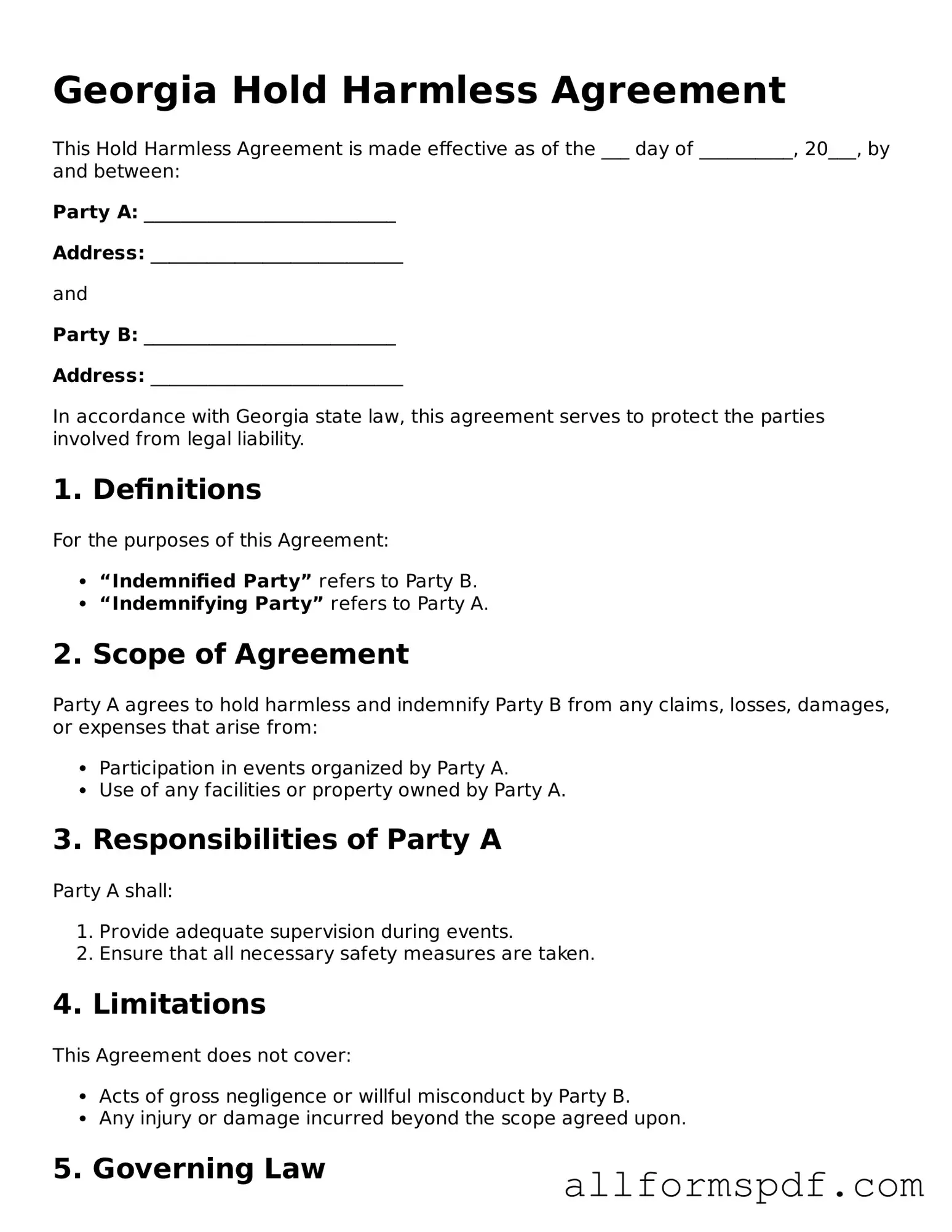Filling out the Georgia Hold Harmless Agreement form can seem straightforward, but many individuals make common mistakes that can lead to complications. One frequent error is failing to read the entire document before signing. This oversight can result in misunderstandings about the responsibilities and liabilities being agreed upon.
Another mistake is not providing complete information. Incomplete details can lead to disputes later on. Ensure that all necessary fields are filled out accurately. Missing information can invalidate the agreement or create confusion about the parties involved.
Many people also overlook the importance of clearly identifying the parties involved in the agreement. It's essential to specify who is being held harmless and who is providing the hold harmless clause. Ambiguities in the wording can lead to legal challenges in the future.
Additionally, some individuals forget to date the agreement. A date is crucial as it establishes when the agreement was made. Without a date, it may be difficult to enforce the terms or prove when the obligations began.
Another common error is neglecting to review the terms carefully. The language in the agreement may contain specific conditions or limitations. Failing to understand these terms can lead to unintended liabilities.
Signing the agreement without witnessing or notarization can also be problematic. While not always required, having a witness or notary can add an extra layer of legitimacy and protection to the agreement.
Moreover, people often fail to keep a copy of the signed agreement for their records. Retaining a copy is essential for future reference and can help resolve any disputes that may arise.
Some individuals may also misinterpret the scope of the hold harmless clause. It's important to understand what liabilities are being waived and whether any exceptions apply. Misunderstanding this can lead to unexpected financial responsibilities.
Finally, a lack of legal advice is a significant mistake. Consulting with a legal professional can provide clarity and ensure that the agreement meets all legal requirements. This step can save time and prevent issues down the line.
